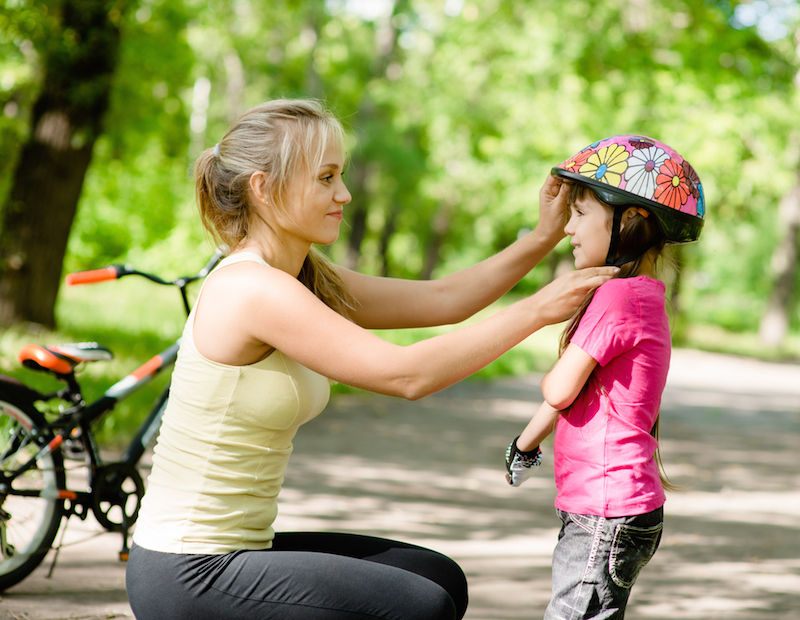Many Ads in Parenting Magazines Show Unsafe Practices for Kids

The heartwarming images of children — smiling, laughing out loud and snuggling — that fill the pages of parenting magazines actually hold a less-than-obvious problem: Many of these ads show kids doing things that are not safe.
In fact, about one in six advertisements in two of the top-selling parenting magazines in the United States contains images or promotes products that could be considered unsafe for a child's health, a new study reveals.
The ads show photographs or describe products that conflict with the health and safety recommendations from the American Academy of Pediatrics (AAP), the nation's largest pediatricians group, according to the researchers.
For example, an ad might show a photograph of young children in a boat, where the kids are not wearing life jackets. This image conflicts with pediatricians' recommendation that kids under 12 always wear life vests while boating. Or, for instance, an ad might show babies in their cribs, sleeping on their stomachs or sides, rather than being placed on their backs, which is the recommended practice to lower the risk of sudden infant death syndrome (SIDS).
"It was surprising that about every sixth ad in these parenting magazines had at least one violation of AAP policies," said Dr. Michael Pitt, an assistant professor of pediatrics at the University of Minnesota in Minneapolis and a co-author of the study. [9 Weird Ways Kids Can Get Hurt]
The researchers had expected to see only a small handful of ads containing offenses, he said. Instead, they found many violations in a wide range of product categories, from infant sleep and toy safety to supplements and baby formula.
For their analysis, the researchers reviewed the pages of the two parenting magazines with the largest circulations, "Parents" and "Family Fun." They looked at all of the ads for products used by children that appeared in issues from the years 2009 and 2014.
Sign up for the Live Science daily newsletter now
Get the world’s most fascinating discoveries delivered straight to your inbox.
For each ad, the researchers evaluated whether the product, the photograph and the words in the ad were consistent with published recommendations from the AAP's policy statements, injury prevention manual or website advice on healthychildren.org.
The researchers will present their findings Oct. 25 at the AAP's yearly national meeting in Washington, D.C.
Potentially harmful images
In the vast majority of cases, the problems the researchers found were in the ads' images. In fact, more than half of the problematic images promoted practices that could be potentially life-threatening to children, Pitt said.
For example, one problem the researchers identified was in an ad for a non-FDA-approved dietary supplement that claimed to treat childhood depression, he said. Another ad showed children riding bicycles without helmets, and a toddler reaching into a bag of popcorn, a food that should be avoided by children under age 5 because it's a possible choking hazard.
Others images showed a baby using an infant walker, and a crib with bumpers — both of which are practices the pediatricians group does not recommend.(Walkers do not help children learn to walk, and they can actually delay normal motor development, the AAP says. And crib bumpers are a suffocation and strangulation hazard.)
When the researchers compared the ads in the 2014 issues to those from 2009, they found fewer problems related to sleep safety and children's screen time (such as infant DVDs, which are not advised for kids under 2), which likely resulted from increased media attention to these topics.
However, they observed an increase in problems related to ads for non-FDA-approved treatments and products that may make children more likely to fall.
The researchers' concern is that when parents see these ads and photos depicted on the glossy pages of a magazine, it may send a message that this behavior is normal, even though these practices could be harmful to children, Pitt told Live Science.
Pitt said he hopes the study findings create increased awareness among parents about the potentially harmful messages in ads, and that it encourages more parents to advocate for safer ads.
He also hopes the findings may encourage advertisers of children's products, as well as editors of parenting magazines, to review their ads and accompanying images to make sure they are consistent with the best practices for children's health and safety.
Follow Live Science @livescience, Facebook & Google+. Original article on Live Science.
Cari Nierenberg has been writing about health and wellness topics for online news outlets and print publications for more than two decades. Her work has been published by Live Science, The Washington Post, WebMD, Scientific American, among others. She has a Bachelor of Science degree in nutrition from Cornell University and a Master of Science degree in Nutrition and Communication from Boston University.










